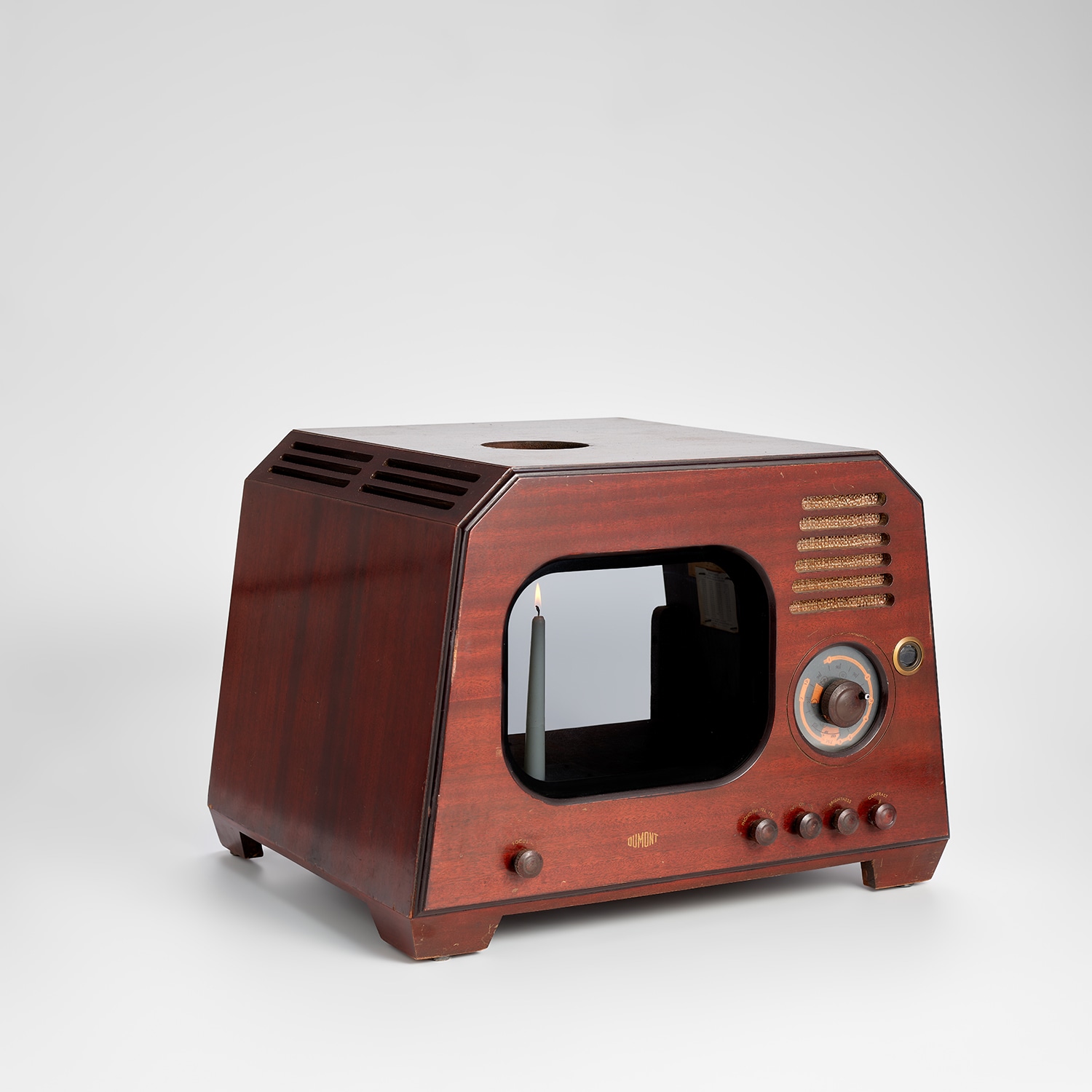







Works from the Archive of Edition Schellmann to benefit the Ars Publicata Project
23
Nam June Paik
Before the Word there was Light, after the Word there will be Light
1992
1948 Dumont television casing containing a candle.
44 x 60 x 50 cm (17 3/8 x 23 5/8 x 19 5/8 in.)
Signed and annotated 'H.C.' in black ink on the accompanying label (one of 2 hors commerce copies, the edition was 18 and 4 artist's proofs), published by Edition Schellmann, Munich and New York.